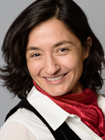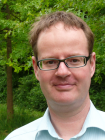Maria Antonietta Loi and Jan Anton Koster partners in Horizon Europe consortia
Professors Maria Antonietta Loi and Jan Anton Koster of the Zernike Institute for Advanced Materials (ZIAM) are both partners in major European research consortia that have been awarded a Horizon Europe grant. The DIAMOND consortium, in which Loi is a partner, will receive about EUR 4.9 million. Koster is a partner in VALHALLA. That consortium will also receive EUR 4.9 million. What is special about these grants is that they come under the Global Challenges & European Industrial Competitiveness branch of Horizon Europe. This means that the technological application has already been considered. In addition to universities, the consortia therefore also consist of a number of companies, in order to make the transfer from lab to production.
Loi will receive EUR 576,000 for her part in the project 'DIAMOND: Ultra-stable, highly-efficient, low-cost perovskite photovoltaics with minimized environmental impact'. Koster will receive EUR 454,000 for his share in 'Perovskite solar cells with enhanced stability and applicability (VALHALLA)'.

Maria Antonietta Loi (ZIAM) | ‘DIAMOND: Ultra-stable, highly-efficient, low-cost perovskite photovoltaics with minimised environmental impact’
Emerging metal-halide perovskite solar cells have a tremendous potential to revolutionize the European energy sector. Perovskites are a unique class of electric-ionic semiconductors that combine the disruptive potential for lowest cost processability with high crystal qualities offering highest power conversion efficiencies. They can be manufactured from liquid precursor solutions, crystallized at low temperatures (<120°C) and even processed in ambient air atmosphere. This qualifies them for the next generation of fully printed photovoltaic (PV) technologies, enabling the highest production speed at the lowest industrial capital and module costs.
Once these technologies have reached the market, the expectation is that they will be desired for use in more advanced products such as tandem PV - solar cells with sensitivity to different wavelengths of light - or integrated concepts in buildings, vehicles or agriculture as well. DIAMOND targets to be foundational for this energy revolution, with the goal to pave the way for industrial and commercial implementation of perovskite PV in the European energy sector.
The Fraunhofer Institute for Solar Energy Systems is coordinator of the consortium.

Jan Anton Koster (ZIAM) | ‘VALHALLA: Perovskite solar cells with enhanced stability and applicability’
VALHALLA will develop perovskite solar cells and modules with power conversion efficiencies above 26% and an extended lifetime. The project will focus primarily on lead based perovskites. The consortium will develop innovative encapsulation methods containing lead-chelating materials that detain all lead even in broken modules. Circularity will be demonstrated, including a full end-of-life recovery of lead. Furthermore, vacuum and hybrid processing will be used, which eliminates the use of toxic and harmful solvents during production. To increase the range of applications of this sustainable technology, VALHALLA will develop rigid, flexible and semi-transparent perovskites with three bandgap ranges together with their optimized charge transport materials.
One of the key targets is understanding the degradation mechanisms of both cells and modules in outdoor operating conditions and developing meaningful accelerated indoor stability tests for perovskite. On three different European locations, an energy yield assessment based on outdoor stressed modules will be performed.
The University of Valencia is the coordinator of the consortium.
More news
-
17 December 2025
Ben Feringa wins Feynman Prize
-
11 December 2025
Stormy planets and an unexpected atmosphere
